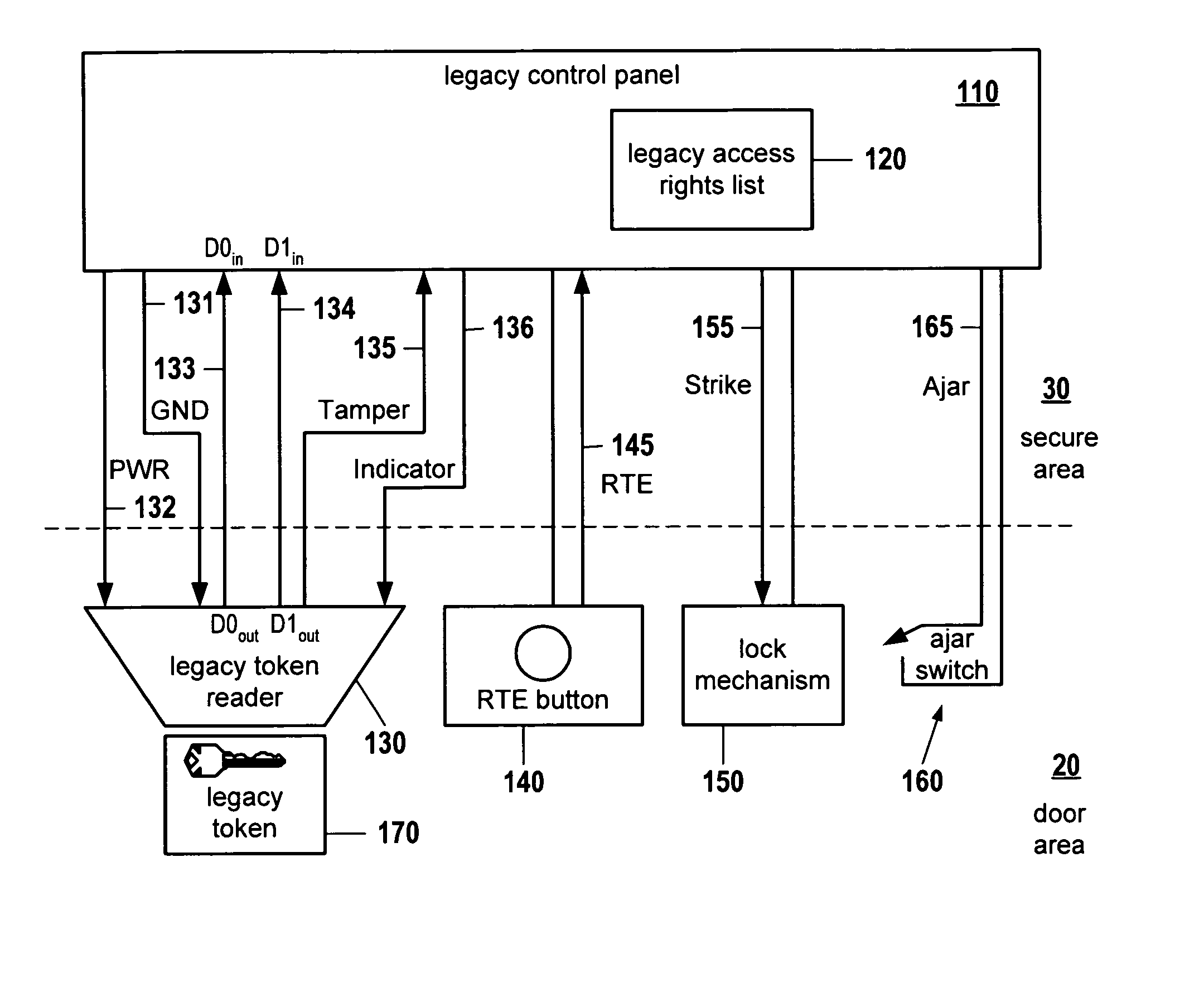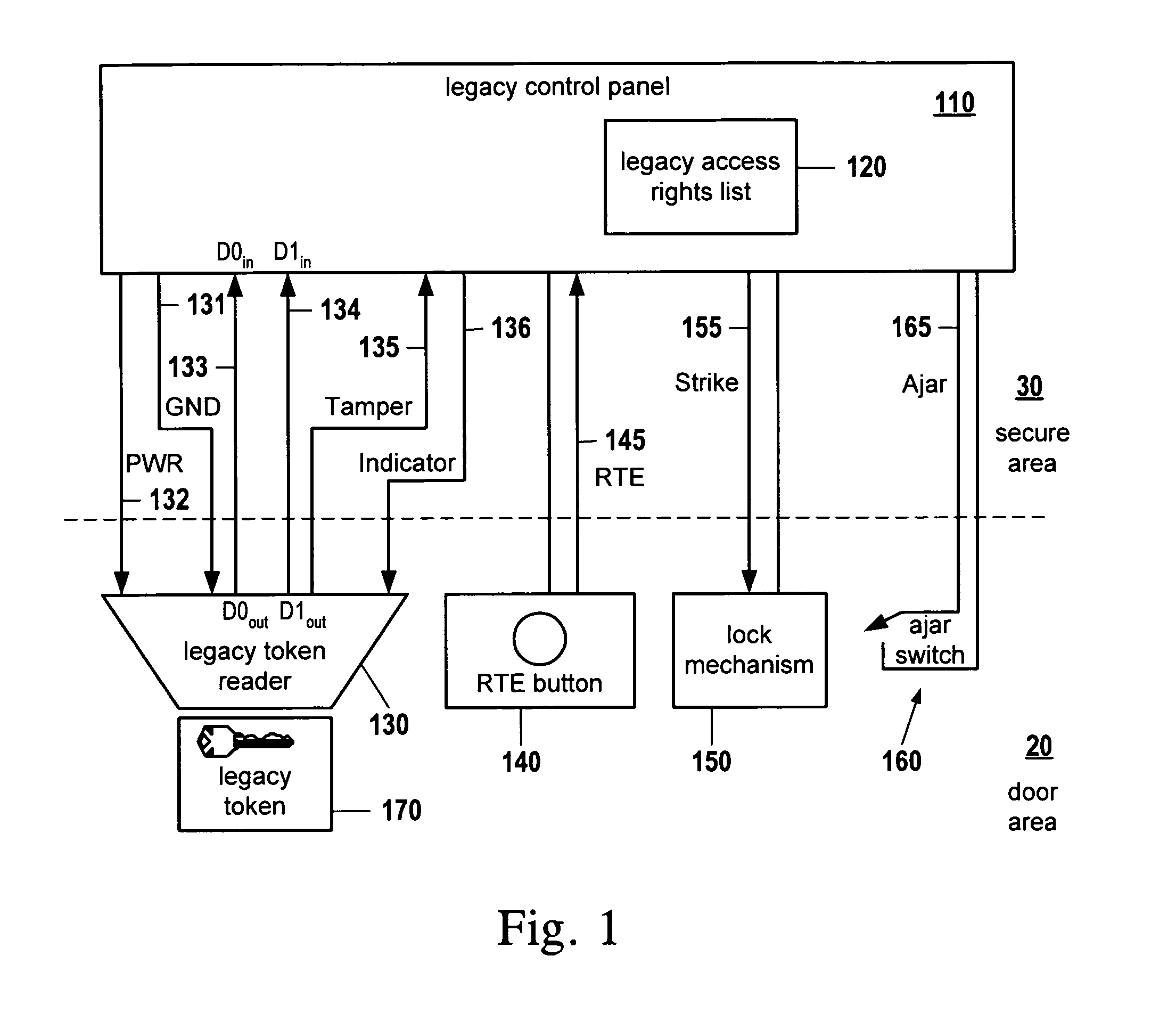Legacy access control security system modernization apparatus
- Summary
- Abstract
- Description
- Claims
- Application Information
AI Technical Summary
Benefits of technology
Problems solved by technology
Method used
Image
Examples
Embodiment Construction
[0046] Before the subject invention is described further, it is to be understood that the invention is not limited to the particular embodiments of the invention described below or depicted in the drawings. Many modifications may be made to adapt a particular situation, composition, process, process step or steps, to the objective, spirit and scope of the present invention. Therefore, it should be understood that, unless otherwise specified, this invention is not to be limited to the specific details shown and described herein, and all such modifications are intended to be within the scope of the claims made herein.
[0047] It is also to be understood that the terminology employed in the Summary of the Invention and Detailed Description sections of this application is for the purpose of describing particular embodiments. Unless the context clearly demonstrates otherwise, is not intended to be limiting. In this specification and the appended claims, the singular forms “a,”“an” and “th...
PUM
 Login to View More
Login to View More Abstract
Description
Claims
Application Information
 Login to View More
Login to View More - R&D
- Intellectual Property
- Life Sciences
- Materials
- Tech Scout
- Unparalleled Data Quality
- Higher Quality Content
- 60% Fewer Hallucinations
Browse by: Latest US Patents, China's latest patents, Technical Efficacy Thesaurus, Application Domain, Technology Topic, Popular Technical Reports.
© 2025 PatSnap. All rights reserved.Legal|Privacy policy|Modern Slavery Act Transparency Statement|Sitemap|About US| Contact US: help@patsnap.com



